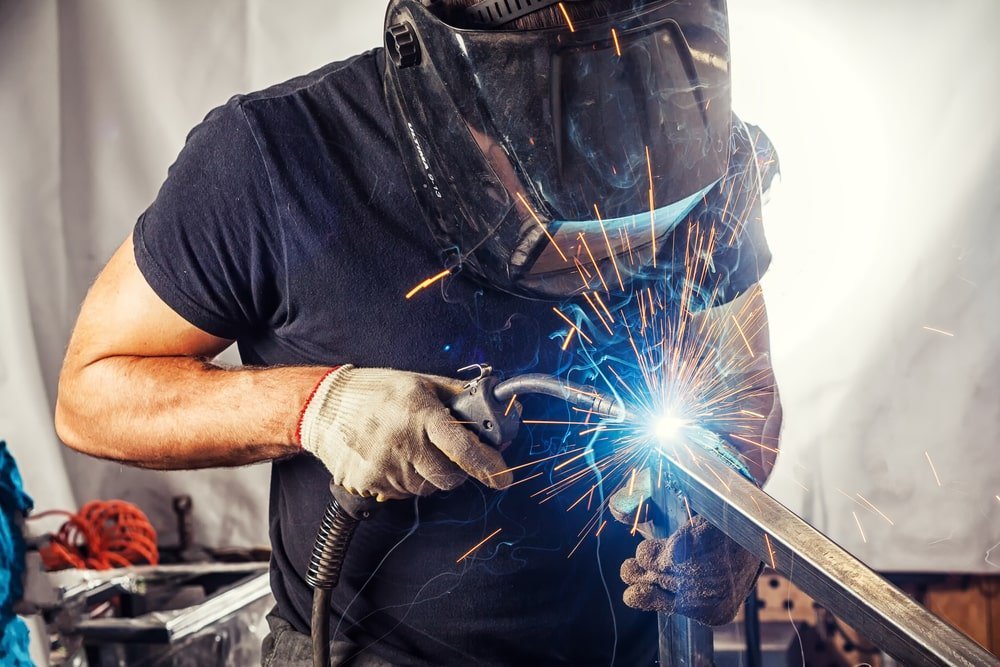

The rapidly advancing technology has paved the foundation for numerous industries, and one such industry is robotic . Robotic welding is one of the rapidly growing industries across the globe. No wonder it was valued at USD 5.42 billion in 2020 and expected to reach $9.76 billion in 2028.
One of the major benefits of welding automation is that it helps avoid human error and negligence during the welding process. Robotic welding helps maximize the time and accuracy required for welding by reducing the margin of error. The sensors help achieve maximum accuracy in welding without any chances of defects or welding discontinuities. Here are four such welding defects that you can avoid with robotic welding.
1. Lack of Fusion
When welding two metal surfaces together, you need to fuse the base metals with a filler metal. The welding process melts the fusion metal and helps weld two base surfaces together. The lack of skill, metal inconsistency, and poor quality metal can affect the quality of fusion, leading to poor adhesion, gaps, and voids in the joint. It drastically affects the strength and longevity of the welded joint.
Robotic welding offers superior control of the welding process. The fusions are accurate till the last millimeter. That means you can easily avoid a lack of fusion defects with robotic welding.
2. Porosity
Welding porosity is one of the major problems faced by many welders. Weld porosity occurs when the grass bubbles get trapped inside the welding joint. These accumulated gas bubbles can make the joint porous. That means the trapped air creates a sponge-like structure inside the weld joint, making it more prone to breaking. Gasses like hydrogen, steam, and carbon dioxide are produced during the welding process. Although these gasses usually escape the molten bead of the weld, many times, poor welding skills, irregular gas flow, or choosing the wrong consumables can trap the air bubbles inside the joint. Welding porosity makes joints weaker which can become life-threatening, especially in the automotive and construction industries.
Thankfully, you can avoid welding porosity with welding automation. Robotic welding ensures a consistent gas flow while maintaining the proper welding movement. That way, no air bubbles get trapped inside the weld bead.
3. Burn Through
A burn-through is a severe type of welding defect. When excessive heat is applied to the base metal, it melts the surface and burns through the bottom. Burning a hole through the base metal destroys the joint and defeats the purpose of welding. It makes the base metal useless and increases the welding time, which can delay your project.
The sensors embedded in welding robots help maintain the proper heat, so the welding electrode doesn’t burn through the joint and destroy the base metal. That’s why robotic welding is used to avoid burn-through defects.
4. Spatter
You can observe the accuracy and quality of welding through the structural integrity of the welding joint and the welding aesthetic. Spatters are tiny sprinkles of molten metal spattered on the base surface and the welding joint. Many amateur welders often cause a lot of spatter around the welding joint that affects the appearance and aesthetic of welding. Spatter usually happens due to lack of skills, wrong amperage and voltage settings, wrong polarity, and wrong electrode angle.
Thanks to its sensors and various welding modes, robotic welding avoids spattering and helps maintain precise and clean welding aesthetics. Depending on the base metal, welding joint length, and width, you can use multiple welding modes. The system offers accurate settings and follows a steady welding path with the right electrode angle, avoiding spatter.
Welding precision is something that you shouldn’t compromise at any cost. Wrongly welded joints can lead to breakage and cause major accidents and property loss. Using this automation, you can avoid all the possible welding defects and ensure the structural integrity of the weld joint to a great extent.
